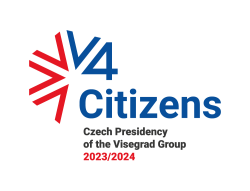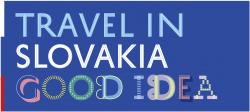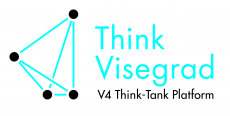
| Sun |
|---|
| 9 |
| Sun |
|---|
| 8 |
| Sun |
|---|
| 12 |
| Sun |
|---|
| 13 |
Energy security in V4
A direct access of a new source of gas would be a game-changer on the V4 markets
In the recently published report on energy security and Visegrad Group the NCSS points out that our countries have yet a lot to accomplish to adjust internal regulations to the EU recommendations. How important is the relation to EU energy policies for V4 energy security?
Indeed, today it’s multi-faceted problem to establish friendly regulatory climate. The Commission followed its 2015 Energy Union strategy with legislative and strategic proposals concerning SoS Regulation and LNG and storage respectively. The storage and LNG communications did not contain specific legislative measures, but provided an assessment of current conditions that require more complete market integration.
The revision of Regulation No 994/2010 that emerged was shaped by the results of its findings from the October 2014 stress test, the October 2015 report on the implementation of Regulation No 994/2010, published country-level opinions of national compliance with the Regulation in 2015, and feedback from a five month period of public consultations in 2015. A regional approach to risk assessment (RA), preventive action plans (PAPs) and emergency plans (EPs) allow for more efficient market based solutions than would disparate national plans that do not consider cross-border effects.
In relation to the revision of Regulation No 994/2010, the survey indicates that the majority of the V4 stakeholders agree that the Commission should have increased oversight at the regional level to help ensure security of supply matters.
As suggested in the revision proposal, they believe that the Commission should have increased authority to coordinate regional emergencies (74%) and an ex-ante information exchange mechanism with respect to third party contracts (74%). Furthermore, a slight majority (61%) of respondents believe that current fora (ENTSOG, Gas Storage Europe, Gas Infrastructure Europe) and the EU framework (Regulation 994, REMIT) are adequate at the V4 regional level to ensure security of supply, while a still considerable segment (39%) believes that more enforceable obligations are necessary.
Currently the V4 countries differ with regard to national security of supply measures and market integration. Czech Republic and now Poland are considerably more diversified than Slovakia and Hungary owing to the access to western hub-based gas and an LNG terminal respectively. Meanwhile Hungary and Slovakia remain highly dependent on a single supplier (Russia) for gas in their energy mix, as terms of their long-term contracts have not been negotiated to the same degree and they await key pieces of infrastructure to enable source diversification.
So far, there has been little progress within the V4 to harmonise security of supply related legislation according to aspirations of the European Commission. Each V4 country failed to meet the full criteria of Regulation No 994/2010 by the issued opinion of the Commission, and consequently each was advised to make amendments to national preventive action plans (PAPs) and emergency plans (EPs). Beyond the need for more technical compliance, the Commission recommended that each consider the potential effects of measures adopted by neighbouring countries and cooperate in the development of preparatory and mitigating measures in the case of a crisis.
Ultimately, the Commission is attempting to encourage Member States of the EU to adopt market-based measures and cooperate on a regional level to achieve greater efficiencies. In this sense, there is much opportunity for the V4 to find common ground and mutually acceptable solutions with respect to security of supply.
V4 energy security strategy after 2008-2009 gas supplies disruptions from Russia boosted many infrastructure projects that would connect infrastructure in the region. What energy project of major importance for enhancing have been already accomplished and what are yet to be finished? What factors may jeopardise those plans?
In fact, after 2008-2009 gas supplies disruptions from Russia, the architecture of the EU energy policy was dramatically changed. The LNG terminal in Świnoujście (Poland) was opened on October 12, 2015. The LNG terminal in the port of Klaipeda (Lithuania) was opened a year early, on October 27, 2014. By 2020, it is expected that Polish LNG (and Lithuanian LNG via GIPL) will be paired with Croatian Krk FLNG to form the bookends of the North-South corridor linking the Baltic and Adriatic seas via the Visegrad states.
The V4 countries need to capitalise on this as a means of diversification and an opportunity for ensuring their own energy security. As a new supply, LNG creates alternatives to traditional pipeline gas from Russia. Eventually, when combined with improved reverse flow access to western markets, it will perhaps lay the groundwork for the development of a regional gas hub. The cumulated capacity of the V4 would account for some 15-17 bcm, or almost one half of the V4’s yearly gas consumption.
Furthermore, the development of regional LNG interconnectors will empower the V4 states in future contractual renegotiations with Gazprom and, at least, increase the competitiveness of Eastern European gas markets. Again, market liberalisation will naturally provide leverage for the V4, as it has in Lithuania, which would alleviate the need for a Commission’s involvement in gas supply negotiations.
It is worth noting, the aim of Visegrad group energy policy is to diversify supply sources, suppliers and transit routes, primarily advocating the construction of new gas infrastructure. At the same time, in June 2013, the Trans Adriatic Pipeline (TAP) was chosen over Nabucco to bring Caspian gas to the European border.
A large part of Europe’s failure over Nabucco can be attributed to Russia’s divisive South Stream pipeline proposal, which remained on the table from 2007 until 2014, and the potential transit revenues and presumed supply security that lured many CSEE governments to support it. Once Vladimir Putin announced its termination in 2014, countries in the region were forced to shift focus to cooperation on smaller interconnector projects.
And yet the Southern Gas Corridor (SGC) will begin to open the southern route for Caspian gas and potentially other sources down the road in 2019. Initially only 10 bcm will enter Italy, but this can be doubled to 20 bcm in later stages if there are interested investors and willing contributors of gas (such as Iran, Iraq, Turkmenistan or even Israel). If demand for gas in Central Europe rises, it will be able to flow through Bulgaria and Romania to Hungary via interconnectors. But this is more of a medium-term, ten-year outlook. It will have a greater immediate effect for diversification in South East Europe before it reaches the V4 borders (Hungary). It is worth reiterating that experts and representatives of gas companies in the framework of our survey highlighted the construction of SGC as a key priority (second place – 24%) for the coming years.
Who are main allies of the Visegrad energy security on the global scene and what’s their significance and potential influence on future developments in that field? Who should V4 countries ally with in that respect?
Prospective alternative source of gas supply to Visegrad group states is natural gas from Norwegian continental shelf via the proposed Baltic Pipe between Denmark and Poland, with an envisioned capacity of up to 10 bcm/year. But it should be noted that feasibility study is under preparation and will be prepared by the end of 2016. The EU-Norway gas route would be independent from non-EU transit countries with a very low risk of interruption beyond technical issues. Currently, the V4 states have low level of Norwegian gas in their gas supply portfolio. The Czech Republic purchases the most, with a third of imports coming from Norway, however, still technically dependent on the physical flows of gas from Russia.
While the European Union wants Norway to remain an integral gas supplier to Europe, the trend of low demand and falling prices makes investment in new projects for state-owned Statoil more risky. In 2015, upstream investments in the Norwegian petroleum industry dropped after many years of strong growth. This is due to a number of factors, being that many major development projects have been completed or are nearing completion, while some new projects have been postponed as many companies try to cut their investments. Moreover, the European energy and climate policy favors the development of renewable energy over natural gas leaving the Norwegian company without a guarantee of stable European demand in the medium and long run. If these circumstances could be overcome, direct access of a new source of gas would be a game-changer on the V4 markets providing physical diversification for the CEE region.
Nataliia SlobodianPhD is an energy expert at the National Centre for Strategic Studies, where she is responsible for the energy security agenda. She graduated from Taras Shevchenko National University of Kyiv (Ukraine). In the past two years, she has headed the Department of Energy Policy at the International Centre for Policy Studies (Kyiv).
Read the original text in Visegrad Insight.
This article has been automatically generated from the Visegrad Insight magazine website, a project funded by the International Visegrad Fund. The opinions expressed in this article do not necessarily have to represent the official position of the donor, the Visegrad Group, or the publisher (Res Publica Nowa).









